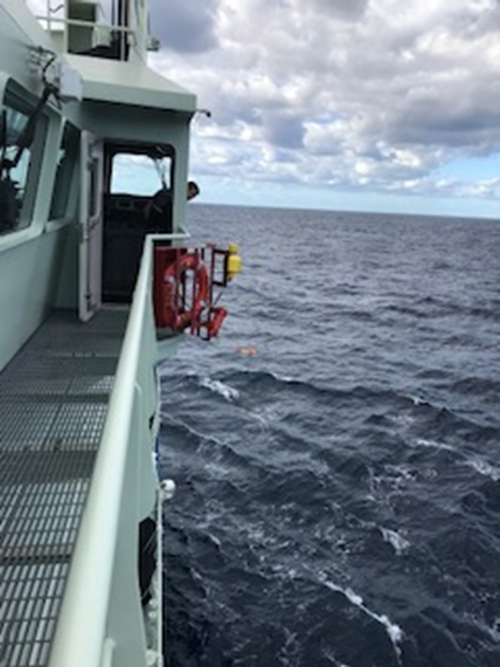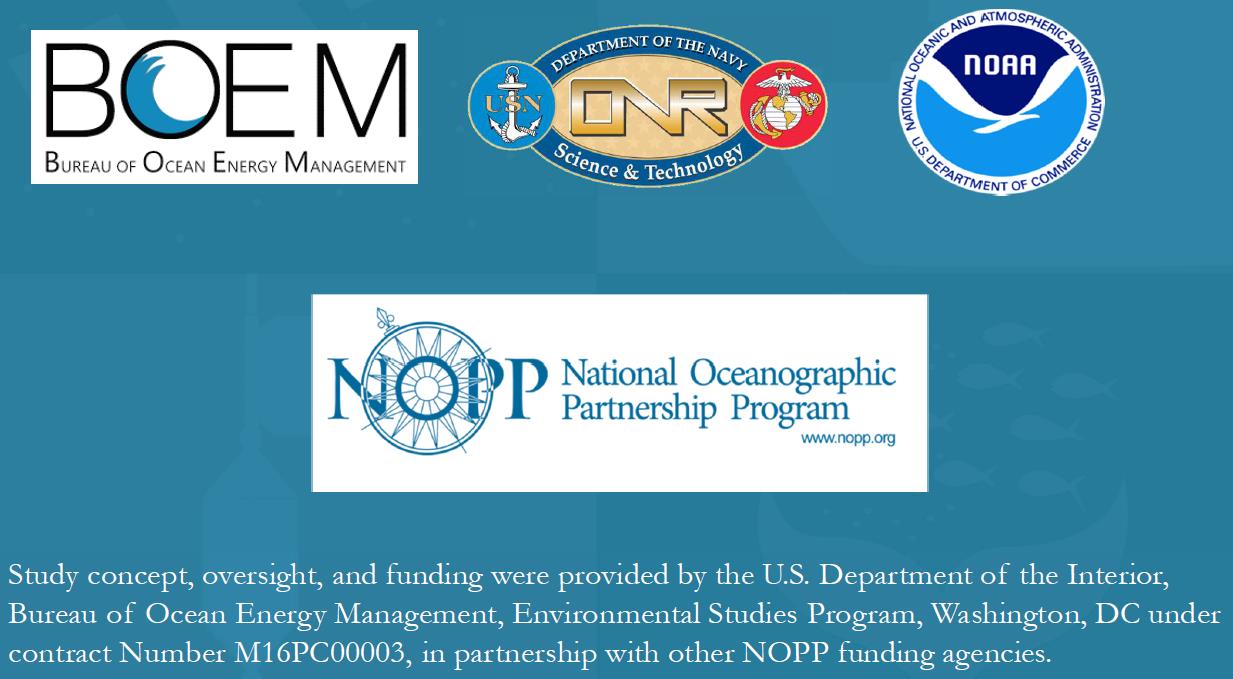It is hard to believe it has only been a week since we’ve been out here. We have been very productive, already leaving our 5th site. For the first few lander retrievals I’ve been on marine mammal watch, which provides the best view in the house for seeing this process in action.

The landers sit on the seafloor, weighed down by over 800 lbs. of weight. These weights keep the lander in place until a mermaid releases them with her song. Just kidding, but it is an acoustic release that frees the lander of its heavy burden. The lander is then positively buoyant due to the three glass spheres (inside the orange plastic) attached to it, allowing it to ascend to the sea surface. There are many eyes looking out for the lander on the surface. This can be a stressful task because in the vast ocean if there is a fast enough surface current, the lander may drift very far from where it was released. And it can be difficult to see it, or find it if it is far enough away from the vessel. Once the lander is spotted, the vessel makes its way to the lander, which in the ideal case, will pop to the surface just in front of the bow. The process of rising to the surface takes about 15-20 minutes from a depth of 900 meters, like our most recent site off of Florida. We try to position the lander on the starboard side, so that the equipment used to bring it onboard is closest to the lander. The boatswain of the ship uses a grappling hook attached to wire in the winch to secure the lander when it is within reach. Then it is just a matter of operating the winch to pull the lander out of the water and placing it on board (Figure 2). As a final step, we place the lander on a new set of weights to ready it for the next deployment. From sending the acoustic signal to the lander to placing it back on new weights, it takes less than one hour! Pretty impressive, if you ask me. And the deployment of a lander is even quicker!

After a few sites and getting into the rhythm of our shifts, I finally had the opportunity to help Carmen and the team refurbish a few of the landers. But, that will have to be a story for another day…
By Hilary Kates Varghese (PhD student at the University of New Hampshire)


